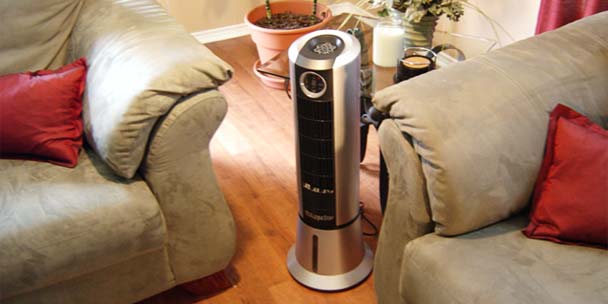As the summer season comes upon us, buying an evaporative cooler is a decision you will be glad you made. If you are looking to buy one or more, you have to be aware of some information and tips. One of these is the different types of evaporative air coolers.
Evaporative coolers work on the principle of cooling air by evaporation. In a cooling unit, water is first drawn to lower the temperature of cooling pads. Next, warm air from outside gets drawn over the cooling pads, and the water evaporates to form cool air, which then disperses to the surrounding.
The primary difference in the types of evaporative coolers arises from the cooling, evaporation, and distribution. Based on this difference, there are two types of portable air coolers:
- The humidifying coolers: Most evaporative coolers are classified as humidifying coolers because they do not only lower the air temperature but they increase the air humidity alongside. That is achieved by releasing ‘wet air,’ which basically means cooled air with moisture. This type of evaporative cooler is used in areas where humidity is dangerously low.
- The non-humidifying coolers: These types of coolers do not release humid air because the moisture is removed after evaporation, shortly before the air is dispersed into the environment. a simple anti-humidity setup controls the humidity to a very low and negligible level. These non-humidifying coolers are important for use in areas where both the humidity level and air temperature are high. An increase in humidity in such areas may cause respiratory problems, so users must only deploy evaporative coolers that can lower the temperature and possibly the humidity.
Portable evaporative coolers may also be distinguished according to their power source. These are:
- AC: An evaporative cooler using an AC power source cannot run on batteries. You have to plug it into a power source.
- DC: Smaller modern desk portable coolers are now available. These units, by design, are to use DC power via USB cords as their power sources.
- AC/DC: Some units are designed to run on either an AC or a DC power source. These are inverter-compatible and most often come with rechargeable batteries.
When buying a portable air cooler, you have to consider your environment and decide if you need either the humidifying or the non-humidifying air cooler. You should also consider your primary power source before making a purchase.

